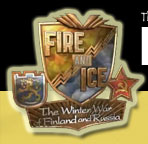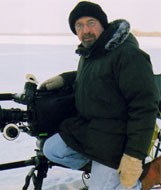

The Uniter
and the Divider
Word / PDF
ESSAY
Marshal C. G. E. Mannerheim
Finland’s history as a free and independent democratic nation
converges around the life and career of Carl Gustaf Emil Mannerheim.
Born into a Swedish speaking aristocratic family in Finland, Mannerheim
began his career in the Russian Imperial Army. By the end of World
War I, he had earned the rank of Lieutenant General. In 1918, he
strongly objected to the changes in the Army following the Russian
Revolution and resigned his commission. He returned to Finland.
In 1917, after 600 years of Swedish domination and 100 years of Russian rule, Finland declared its independence. It established a European style parliamentary democracy. The nation was divided between those sympathetic to the Russian Revolution, called “Red Guards” and those who opposed it. In 1918, Red Guards attempted to seize control of the government with the active support of military forces of the new Soviet Union.
Mannerheim was asked by the Finland’s Senate to form a White Army to oppose the Red Guards. With Mannerheim in command, the White Army defeated the Red Guards in a three month long civil war.
During and after the civil war, Mannerheim opposed the pro-German policy of many of Finland’s political leaders. He foresaw that German military assistance during the war would become a problem in future relations with the Soviet Union.
Mannerheim was a candidate in Finland’s first presidential election in 1918. He was defeated at the ballot box and left government to organize agencies to promote health and welfare programs within Finland.
In 1931, Mannerheim was appointed chairman of the National Defense
Council. He urged the nation’s political leaders to strengthen
the armed forces, but his advice was ignored. In 1939, when war with
the Soviet Union seemed inevitable, he advised the politicians that
his army was too weak to fight. He urged compromise, but once again
his advice was rejected.
Now Mannerheim was forced to use all his skills, as a military and
political leader, to fight the Soviets long enough and hard enough
in the Winter War until they were ready to accept a negotiated settlement.
Through Mannerheim’s considerable skill in waging military
and diplomatic battles, he united the Finnish people to withstand
an enemy far superior in force.
Josef Stalin
The Bolsheviks, led by Lenin, transformed the Russian Revolution
into a regime based on Marxist ideology. With Lenin’s death,
Josef Stalin took the reins of power and transformed the Soviet
Union into a political and economic system that has been called Stalinism.
Stalin was born in Georgia, the son of a shoemaker and a serf. As a young man, he became involved in the socialist and communist movements after being expelled from seminary school. A political revolutionary, he spent a decade facing repeated arrests, exile and a life in the political underground. In 1912, he became a member of the Bolshevik Central Committee and in 1917, a member of the Politburo of the Central Committee.
In 1922, Stalin became Secretary General of the Communist Party and in 1924, after Lenin’s death, Stalin began to consolidate his power. During the 1930s Stalin ruthlessly eliminated rivals and opponents, real or perceived, in a reign of terror known as The Great Purge. By 1938, he had achieved absolute power.
During this period, Stalin instituted a policy of industrialization, a crash program built on great sacrifices by workers and the extensive use of slave labor in a vast system of prisons known as the gulag. The Soviet Union was quickly transformed into an industrial and military power.
Stalin also moved to collectivize agriculture by force. When he was faced with widespread resistance by farmers, Stalin ordered that they be either shot, deported or placed in the gulag – a network of political prisons and labor camps. The disruptions caused by forced collectivization led to a famine and the deaths of an estimated 5 million people.
Stalin’s Great Purge swept through Soviet society. Many millions
lost their lives, were deported or arrested, including writers, artists,
scientists and most of the Red Army’s leadership.
In August of 1939, Stalin came to terms with another proponent of
absolute power – Adolf Hitler. The Soviet and German foreign
ministers, Vyacheslav Molotov and Joachim von Ribbentrop, signed
a pact that divided Europe into their mutual spheres of influence.
A few weeks later the Soviets and the Germans invaded and divided
Poland. Stalin was soon demanding concessions from the Baltic States
including Finland. It was the triggering event of the Winter War
and World War II.
LESSON PLAN
Grade level 7-12
Time allotment 4-5 55 minute class periods
STANDARDS
World History Standards for Grades 5-12/ Era 8
National Center for History in the Schools
http://www.sscnet.ucla.edu/nchs/standards/worldera8.html
Standard 4B
The student understands the global scope, outcome and human costs
of the war, and is therefore able to:
Assess how the political and diplomatic leadership of such individuals
as Churchill, Roosevelt, Hitler, Mussolini and Stalin affected the
outcome of the war.
OVERVIEW
In this lesson, students will compare the political and diplomatic leadership styles of Josef Stalin (Soviet Union) and C.G.E. Mannerheim (Finland) by creating a résumé for each leader. Students will also devise a set of hypothetical interview questions and responses to be presented to the class.
OBJECTIVES
At the end of this lesson, students will be able to:
Compare and contrast Mannerheim’s and Stalin’s
leadership styles
Devise a list of interview questions that a present-day interviewer
might ask Stalin and Mannerheim and then generate a list of possible
responses for each leader
VOCABULARY
Bolshevik
Marxist
Stalinism
Great Purge
industrialization
gulag
collectivization
parliamentary
democracy
Red Guards
White Army
MATERIALS NEEDED:
Classroom board
Paper and pencil
Scissors
2 containers
Word processor
INTRODUCTORY ACTIVITY
After reading the essay, “The Uniter and The Divider,” have students create a sample résumé for both Stalin and Mannerheim. In addition to the information provided in “Fire and Ice” and the essay, have students use all available classroom resources to acquire additional facts. Use the résumé sections below to guide students in their search for biographical information. Provide students with a sample résumé for their reference.
Name
Address
Education
Work Experience
Political Accomplishments
Philosophy statement
Hobbies
ACTIVITY
After researching the biographical information and leadership styles of Stalin and Mannerheim, have students draw up three questions each for both Stalin and Mannerheim that a present-day television or radio interviewer might ask regarding the decisions they’ve made or the influence they’ve had on history. Once students write their three questions, have students cut their paper into individual questions and toss them in two separate containers labeled Stalin and Mannerheim. Each student will then choose three questions from each container and generate a list of possible responses to each of those questions. Students should write the questions they selected along with their responses. Have students share responses with the class with an assigned interviewer asking the questions. Use the themes below to generate ideas.
Mannerheim’s exit from the Russian Army
Mannerheim’s defeat in the first Finnish presidential election
How Mannerheim planned on dealing with a possible Soviet attack
The effect of Stalin’s “collectivization of agriculture” on the Soviet Union’s people
The reason for Stalin’s repeated arrests
Stalin’s motivation for The Great Purge





